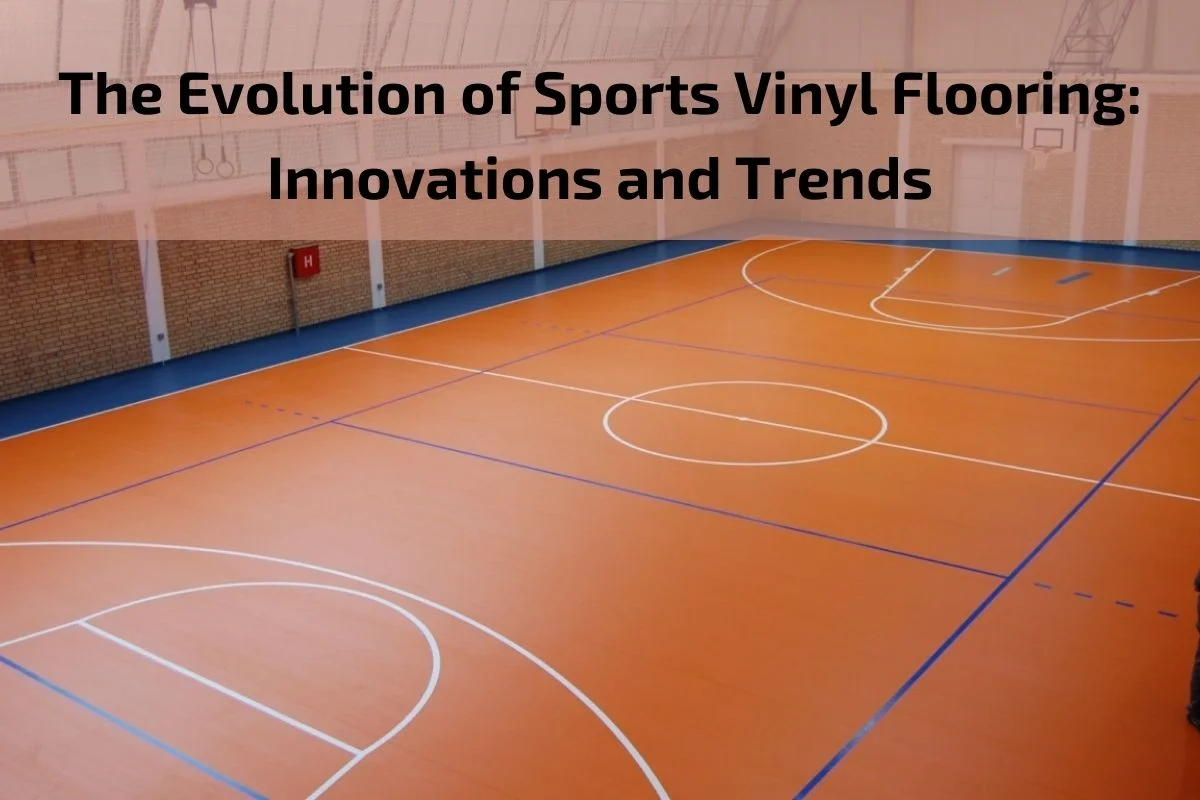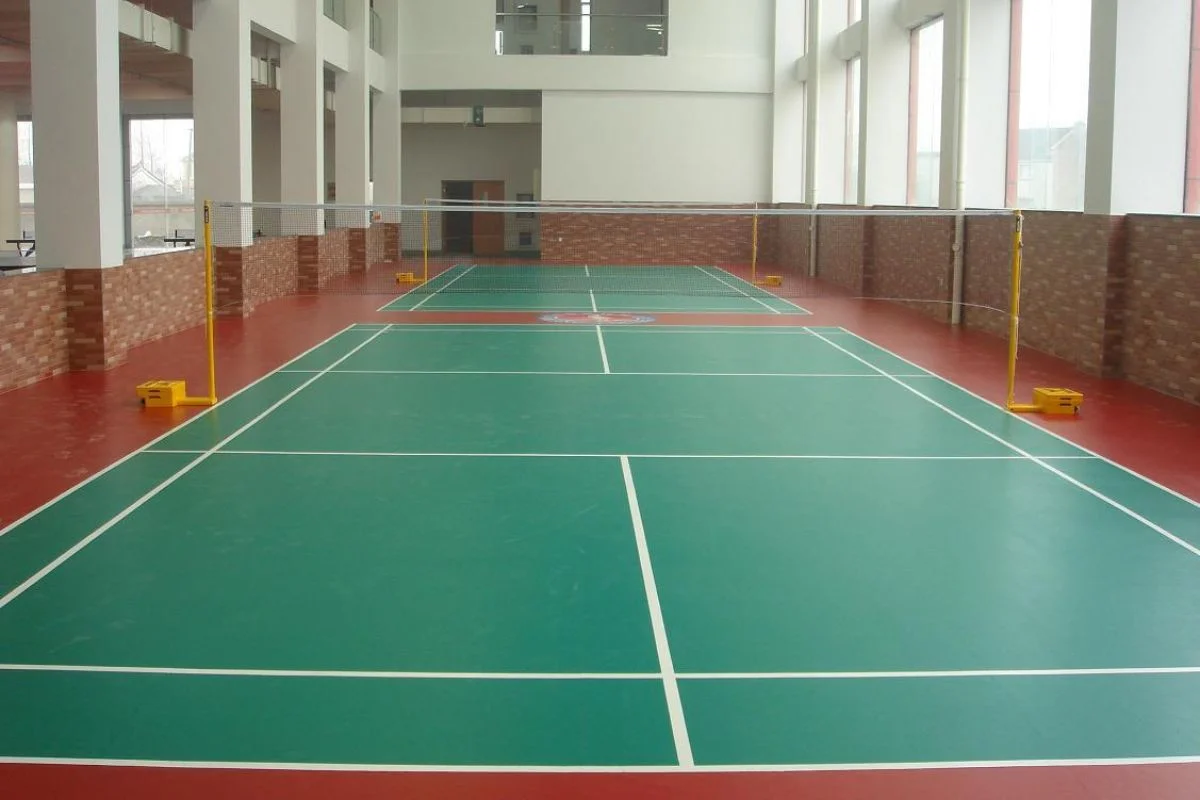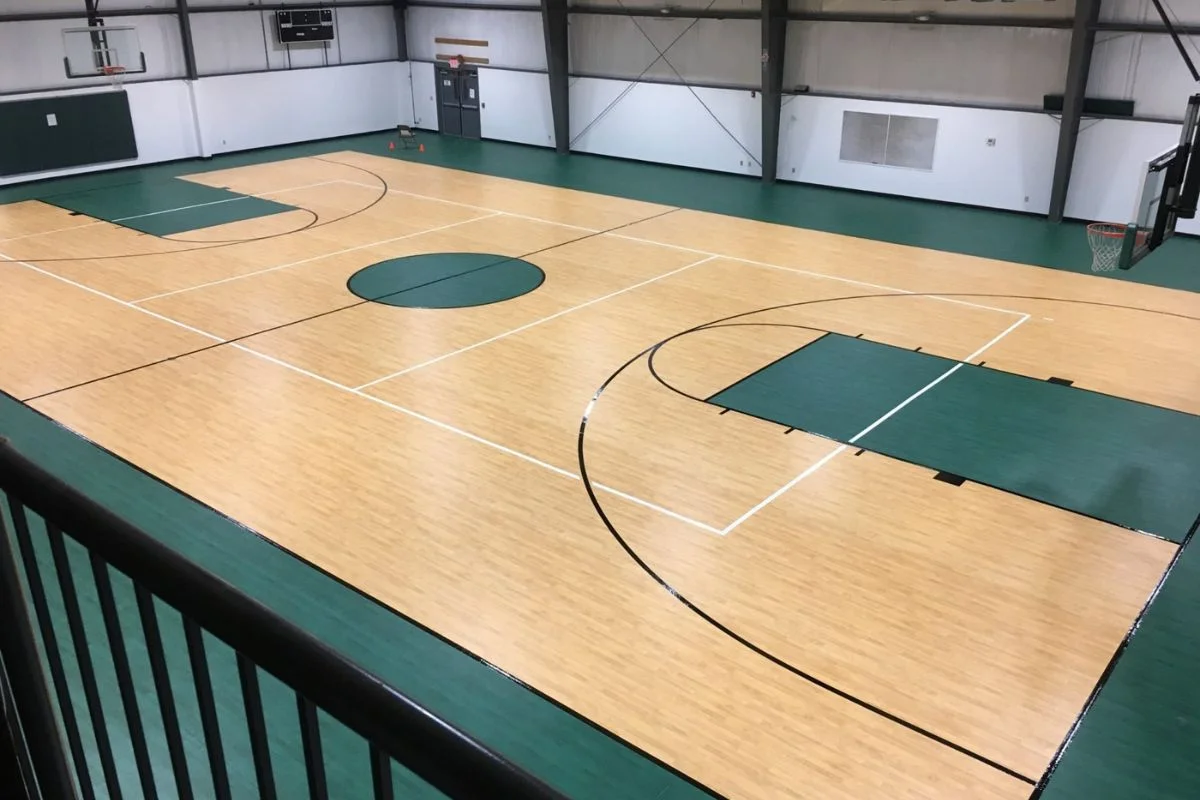Blog
 The evolution of sports vinyl flooring stands as a testament to the relentless pursuit of excellence and innovation in the world of athletic surfaces. Over the years, sports vinyl flooring has undergone remarkable transformations, propelled by advancements in technology, materials, and design. From humble beginnings to cutting-edge solutions, the journey of sports vinyl flooring reflects a commitment to performance, safety, and sustainability in sports facilities worldwide.
In this exploration of the evolution of sports vinyl flooring, we delve into the remarkable innovations and emerging trends that have shaped its trajectory. From its inception as a durable and versatile flooring option to its current status as a preferred choice for athletic venues of all sizes, sports vinyl flooring continues to redefine the standards of quality and functionality in the sports industry.
Join us as we embark on a journey through time, tracing the evolution of sports vinyl flooring from its roots to its modern-day applications. From pioneering technologies to groundbreaking designs, we uncover the key milestones and transformative developments that have propelled sports vinyl flooring to the forefront of sports surface solutions.
The evolution of sports vinyl flooring stands as a testament to the relentless pursuit of excellence and innovation in the world of athletic surfaces. Over the years, sports vinyl flooring has undergone remarkable transformations, propelled by advancements in technology, materials, and design. From humble beginnings to cutting-edge solutions, the journey of sports vinyl flooring reflects a commitment to performance, safety, and sustainability in sports facilities worldwide.
In this exploration of the evolution of sports vinyl flooring, we delve into the remarkable innovations and emerging trends that have shaped its trajectory. From its inception as a durable and versatile flooring option to its current status as a preferred choice for athletic venues of all sizes, sports vinyl flooring continues to redefine the standards of quality and functionality in the sports industry.
Join us as we embark on a journey through time, tracing the evolution of sports vinyl flooring from its roots to its modern-day applications. From pioneering technologies to groundbreaking designs, we uncover the key milestones and transformative developments that have propelled sports vinyl flooring to the forefront of sports surface solutions.
Importance of selecting the right sports vinyl flooring for sports facilities
Selecting the right sports vinyl flooring for sports facilities is paramount to ensuring the safety, performance, and longevity of the playing surface. Here’s why making the appropriate choice matters:
Athlete Safety: The safety of athletes is a top priority in sports facilities. The right sports vinyl flooring offers shock absorption properties that reduce the impact on joints and muscles during high-intensity activities. This helps minimize the risk of injuries such as sprains, strains, and stress fractures, ensuring athletes can perform at their best without compromising their well-being.
Performance Enhancement: Sports vinyl flooring is designed to provide optimal traction and ball response, allowing athletes to move confidently and execute precise movements. A well-selected flooring surface contributes to consistent playability, enabling athletes to focus on their performance without worrying about surface inconsistencies or slipping hazards.
Durability and Longevity: Sports facilities endure heavy foot traffic, equipment use, and environmental factors that can wear down inferior flooring materials. Choosing high-quality sports vinyl flooring ensures durability and longevity, reducing the need for frequent repairs or replacements. This saves time and money in the long run while maintaining the integrity of the playing surface.
Customization and Versatility: Sports vinyl flooring offers customization options to meet the unique requirements of different sports and activities. From basketball courts to fitness studios, the versatility of sports vinyl flooring allows for the incorporation of specific markings, logos, and color schemes tailored to each facility’s aesthetic and functional needs.
Ease of Maintenance: Maintaining sports facilities can be a challenging task, especially with busy schedules and frequent usage. Sports vinyl flooring is known for its ease of maintenance, requiring minimal effort to keep clean and hygienic. Regular sweeping, mopping, and occasional buffing are usually sufficient to preserve the flooring’s appearance and performance.
Environmental Considerations: Environmentally conscious sports facilities prioritize sustainable building materials, including sports vinyl flooring. Many manufacturers offer eco-friendly options made from recycled materials and low-emission adhesives, reducing the environmental impact of sports facility construction and renovation projects.
Regulatory Compliance: Sports facilities must adhere to safety standards and regulations set forth by governing bodies and organizations. Choosing the right sports vinyl flooring ensures compliance with industry standards for slip resistance, shock absorption, and indoor air quality, providing peace of mind for facility owners, managers, and users.
Advantages and Disadvantages of Sports Vinyl Flooring
Advantages of Sports Vinyl Flooring:
Durability: Sports vinyl flooring is highly durable and resistant to wear and tear, making it ideal for high-traffic areas in sports facilities.
Shock Absorption: Vinyl flooring offers excellent shock absorption properties, reducing the risk of injuries to athletes during high-impact activities.
Easy Maintenance: Sports vinyl flooring is easy to clean and maintain, requiring simple sweeping, mopping, and occasional buffing to keep it in top condition.
Versatility: Vinyl flooring comes in various colors, patterns, and designs, allowing for customization to match the aesthetic preferences of sports facilities.
Affordability: Compared to other sports flooring options like hardwood or rubber, sports vinyl flooring is often more affordable to install and maintain.
Comfort: Vinyl flooring provides a cushioned surface that offers comfort to athletes during training and competitions.
Disadvantages of Sports Vinyl Flooring:
Susceptibility to Scratches: While durable, vinyl flooring can be susceptible to scratches and scuffs from heavy equipment or sharp objects. Limited Environmental Friendliness: Some vinyl flooring products may contain chemicals and additives that are harmful to the environment, making them less eco-friendly compared to other flooring options. Susceptibility to Temperature Changes: Vinyl flooring may expand or contract with fluctuations in temperature, potentially leading to issues with installation and long-term durability. Hardness: While vinyl flooring offers cushioning, it may still feel harder underfoot compared to softer surfaces like rubber or foam. Vulnerability to Moisture: While vinyl flooring is water-resistant, excessive moisture or flooding can damage the flooring and lead to mold or mildew growth underneath. Not Suitable for Heavy Weight Equipment: While suitable for most sports activities, vinyl flooring may not be ideal for areas with heavy weightlifting equipment as it can dent or puncture under extreme pressure.Installation and Maintenance Sports Vinyl Flooring
Installation of Sports Vinyl Flooring:
Subfloor Preparation: Ensure the subfloor is clean, smooth, and free of any debris or imperfections. Level any uneven areas and address any moisture issues before installation.
Acclimation: Allow the vinyl flooring materials to acclimate to the room’s temperature and humidity for at least 48 hours before installation to prevent expansion or contraction post-installation.
Layout and Cutting: Plan the layout of the vinyl flooring, considering patterns, seams, and transitions between rooms or areas. Use appropriate tools to cut the vinyl flooring to fit around obstacles and edges.
Adhesive Application: Apply the recommended adhesive evenly to the subfloor using a trowel, following the manufacturer’s instructions. Allow the adhesive to set to the appropriate tackiness before laying the vinyl flooring.
Installation: Carefully place the vinyl flooring onto the adhesive, starting from one end of the room and working towards the other. Use a roller to ensure proper adhesion and remove any air bubbles or wrinkles.
Seaming and Welding: For areas requiring seams, use heat welding techniques to create strong, seamless joints between vinyl flooring sections. Ensure proper alignment and heat settings to achieve optimal results.
Finishing Touches: Trim excess material from edges and corners, and install transition strips as needed to provide a smooth transition between different flooring surfaces.
Maintenance of Sports Vinyl Flooring:
Regular Cleaning: Sweep or vacuum the vinyl flooring regularly to remove dust, dirt, and debris. Use a damp mop with a mild detergent solution to clean stubborn stains and spills. Avoid Harsh Chemicals: Avoid using abrasive cleaners, wax-based products, or harsh chemicals on vinyl flooring, as these can damage the surface and compromise its integrity. Protect Against Scratches: Place protective pads or mats under heavy furniture and equipment to prevent scratches and indentations on the vinyl flooring surface. Prompt Spill Cleanup: Immediately clean up spills and liquids to prevent staining and damage to the vinyl flooring. Use a damp cloth or mop to blot up spills and dry the area thoroughly. Preventive Maintenance: Periodically inspect the vinyl flooring for signs of wear, damage, or loose seams. Address any issues promptly to prevent further damage and maintain the flooring’s integrity. Professional Maintenance: Consider periodic professional cleaning and maintenance services to deep clean and revitalize the vinyl flooring surface, especially in high-traffic areas or commercial sports facilities.Conclusion
In conclusion, the installation and maintenance of sports vinyl flooring are critical aspects of ensuring the longevity, performance, and safety of sports facilities. By adhering to proper installation techniques and implementing routine maintenance practices, sports vinyl flooring can provide a durable, comfortable, and aesthetically pleasing surface for athletes and users.




